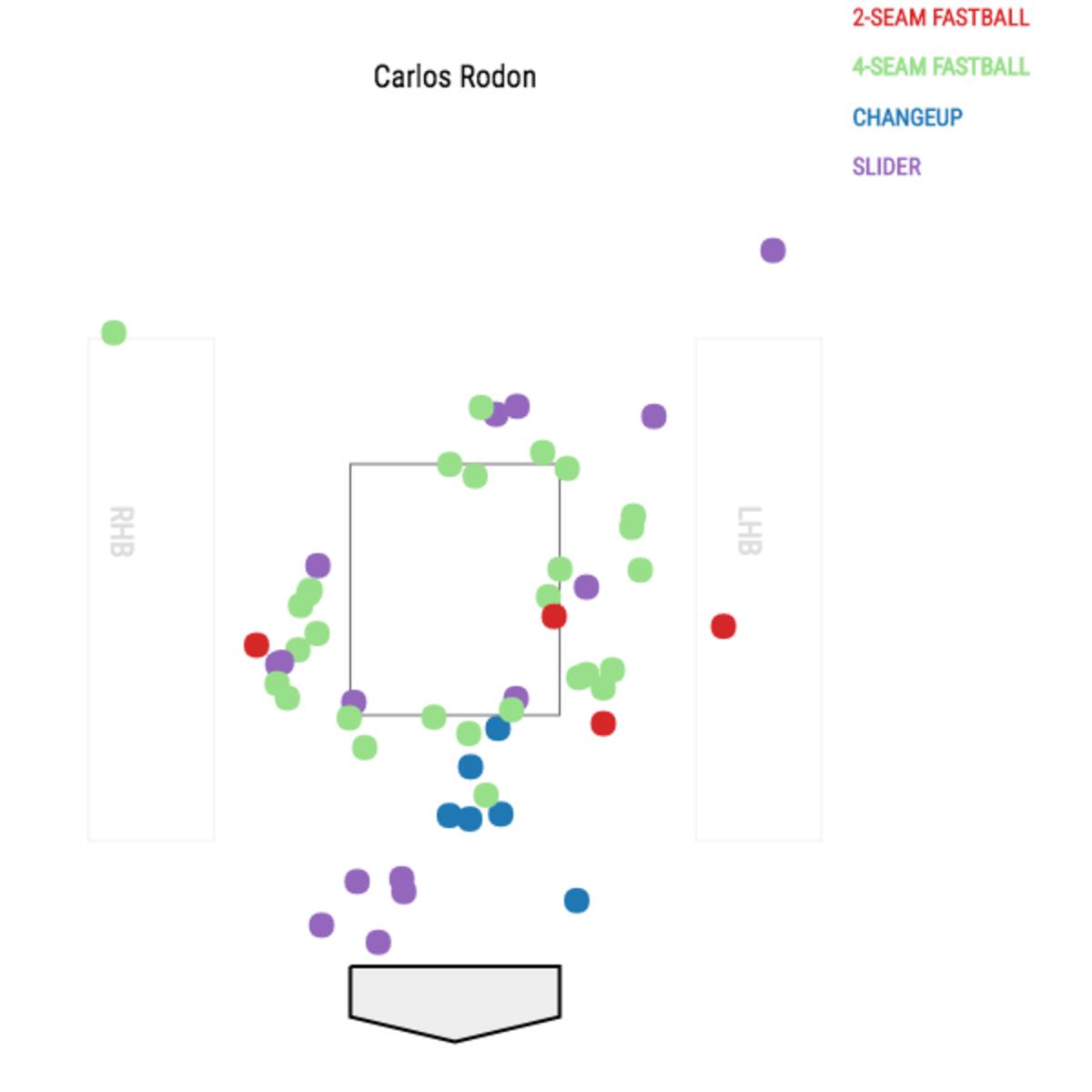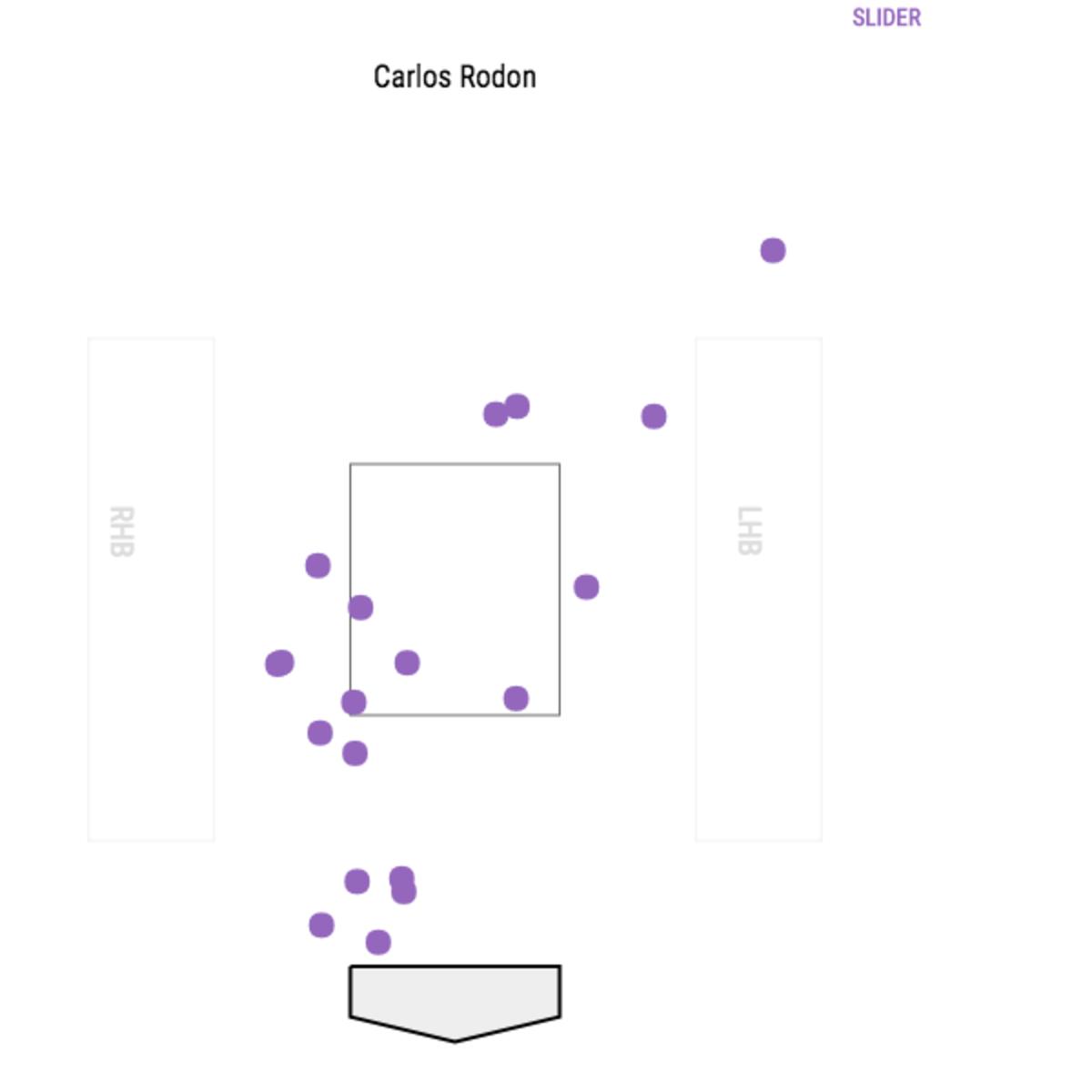White Sox starter Carlos Rodon will succeed once he commands his erratic slider

Carlos Rodon produced one of those beauty-is-in-the-eye-of-the-beholder box scores in his 2017 debut earlier this week. He went five innings and threw 94 pitchers, both solid marks of health for a pitcher coming off a months-long shoulder injury. He allowed three hits and zero earned runs, though an error by Tim Anderson allowed two unearned runs to score. Those, undeniably, are encouraging numbers.
Unfortunately, he was wild. Oh, was he wild. Rodon walked six batters in his five innings. Of his 94 pitches, 53 (!) were balls, including two wild pitches. There is a bit of a silver lining in the fact that three of his walks came in the first inning, his first inning on a major league mound since last September, but he didn’t exactly live in the strike zone the rest of the night. Anyone could find any sign they wanted in Rodon’s performance on Wednesday.
Losing Trea Turner hurts, but Nationals' bullpen problem is far more worrisome
Control issues have plagued Rodon during his short career, but he made a dramatic improvement last season. After posting an 11.7% walk rate in as a rookie, Rodon cut his walk rate to 7.6% last year. While that’s still a bit high for comfort, it wasn’t much worse than league average and was an impressive one-year reduction for a pitcher in his age-23 season. The six free passes he issued in the loss to the Yankees are far from a referendum on his ability to further slash his walk rate this season, but they do provide a jumping-off point.
Let’s first start with Rodon’s pitch mix in his 2017 debut. It’s clear right off the bat that he was working with a limited repertoire while shaking off the rust. Rodon threw 61 four-seam fastballs, 19 sliders, seven two-seamers and seven changeups. Over the first two years of his career, he threw a nearly identical number of four- and two-seamers, with the slider following close behind, and the changeup checking in at a usage rate just shy of 10%. That he threw his four-seamer 65% of the time in the loss to the Yankees makes it rather obvious that he was finding his sea legs for most of the night.
Aledmys Diaz, Dansby Swanson among promising young shortstops struggling in 2017
The four-seamer was the only pitch Rodon threw for a strike a majority of the time, but even that was a breakdown of 33 strikes and 28 balls. Fifteen of his 19 sliders, four of his seven two-seamers, and six of his seven changeups were balls. Moreover, here is a chart of the location of his pitches outside the strike zone, courtesy of Baseball Savant.

Rodon didn’t exactly make the Yankees earn those walks.
The big issue for Rodon, outside of missing the zone more often than not, was the slider. As has become a theme of this column, he can be forgiven for that. A breaking ball is going to be the hardest pitch for any pitcher coming off injury to master. For one thing, it takes the finest touch of any offering. For another, adrenaline can totally undermine it. An overthrown slider turns into either a cement mixer that sails or a 55-foot spike ball.
Here’s the chart of only Rodon’s sliders, including the strikes.

From that alone, we see four cement mixers and five spike balls, none of which are going to induce swings. In fact, Rodon produced just four whiffs, two of which came on the slider, good for a 10.5% whiff rate. For his career, Rodon has a whiff rate of 19.9% with the slider.
The ineffectiveness of Rodon’s slider was on display right away. Aaron Judge came to the plate immediately after the Gardner walk. Rodon bounced his first pitch, a slider, to Judge, but came back with a pair of strong fastballs to get ahead 1–2. Early in his career, Rodon has been electric with his slider in two-strike counts. The pitch’s whiff rate jumped to 26.3% in the first two years of his career when he had two strikes on the batter. In other words, he had Judge right where he wanted him, at least in a typical start.
Here was Rodon’s next pitch.
In the top of the third, Rodon had another opportunity to put a batter away in a two-strike count. This time, it was Austin Romine. By this point of the game, Rodon had settled down a bit after the rocky first inning. Still, he couldn’t get the slider to be the out-pitch that it normally is.
From a movement perspective, this wasn’t a bad pitch. The problem, however, is that he couldn’t get his slider in the strike zone. When any pitch is just a chase offering, it becomes much easier for a hitter to lay off. Once he identifies it, he has the confidence that it’s going to be out of the zone. We saw that with Romine in this instance. He flinched at the pitch initially, but once he picks it up, he was able to let it go relatively easily.
The good news for Rodon and the White Sox is that he did flash the electric slider on occasion. In fact, he saved his best slider of the evening for Judge during his next plate appearance.
Notice, in addition to the break on the pitch, where catcher Omar Narvaez placed his target. Rodon needs to throw the pitch there to get it to break that sharply, and still keep it in the strike zone, and he nails the spot. That’s the Rodon we saw last year, who limited opponents to a .213 slugging percentage with the slider. When that Rodon is back with consistency, he won’t need to count on benevolent beholders to see the beauty in his box scores. It will be evident to all who watch him pitch.
